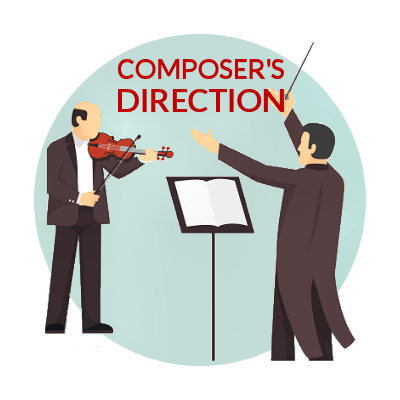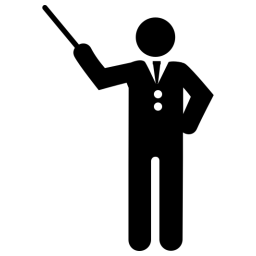
The Composer's Direction Instructing the Musicians
A composer sometimes needs to instruct the musician how to properly interpret a composition so he uses certain directions to tell the musician how to play the piece. It could be just when and where to do something or merely how fast to play the song. Other times, the composer may not wish to repeat or rewrite a particular part as many compositions are repetitious. Directional symbols are instructions to the musician. Placing these symbols on the sheet music is an easy way for the composer to accomplish such tasks.




The repeat mark tells the musician to repeat a song or passage from the mark back to the mark. When the player reaches the second mark, he jumps back to the first mark and repeats from there back to the second mark.




The quindicesima or 15ma mark placed above the staff tells the musician to play the passage two octaves higher than written; or when placed below the staff to play the passage two octaves lower than written.

The octava alta or octave mark placed above the staff tells the musician to play the passage one octave higher than written; or when placed below the staff to play the passage one octave lower than written.


D.S.
The coda sends the musician back to the dal segno (Italian, "from the sign") where he starts the repeat. The dal segno, used with the coda sign, placed above the staff tells the performer to repeat from this symbol.

The segno placed above the staff tells the musician to repeat from this sign. Used with dal segno
D.C. al coda
D.C. al fine'
The da capo (D.C.) sends the musician back to the beginning of the composition where he starts the repeat. It may be followed by al fine (Italian, "to the end"), which tells them to repeat to the word fine and stop, or al coda (Italian, "to the coda"), which tells them to repeat to the coda sign and then continue.




The con sordino placed above the staff tells the keyboard player where to engage the soft pedal. For other instruments it indicates where to begin using the mute.

The senza sordino placed above the staff tells the keyboard player where to release the soft pedal. For other instruments it indicates where to stop using the mute.

The variable pedal mark placed above the staff tells the keyboard player where to engage the sustain pedal. The lower line tells them to hold the sustain pedal through all the notes written under the mark. The point up indicates a brief pause during the tone sustain.


The release pedal mark most often placed under the staff tells the keyboard player where to release the sustain pedal.

Roman numeral analysis - composing method of writing Roman numerals in place of chords

Slash chord, compound chord - a chord in which its inversion or bass note is written behind the key note with a slash mark

Breath mark denotes a place for wind instruments to take a breath


